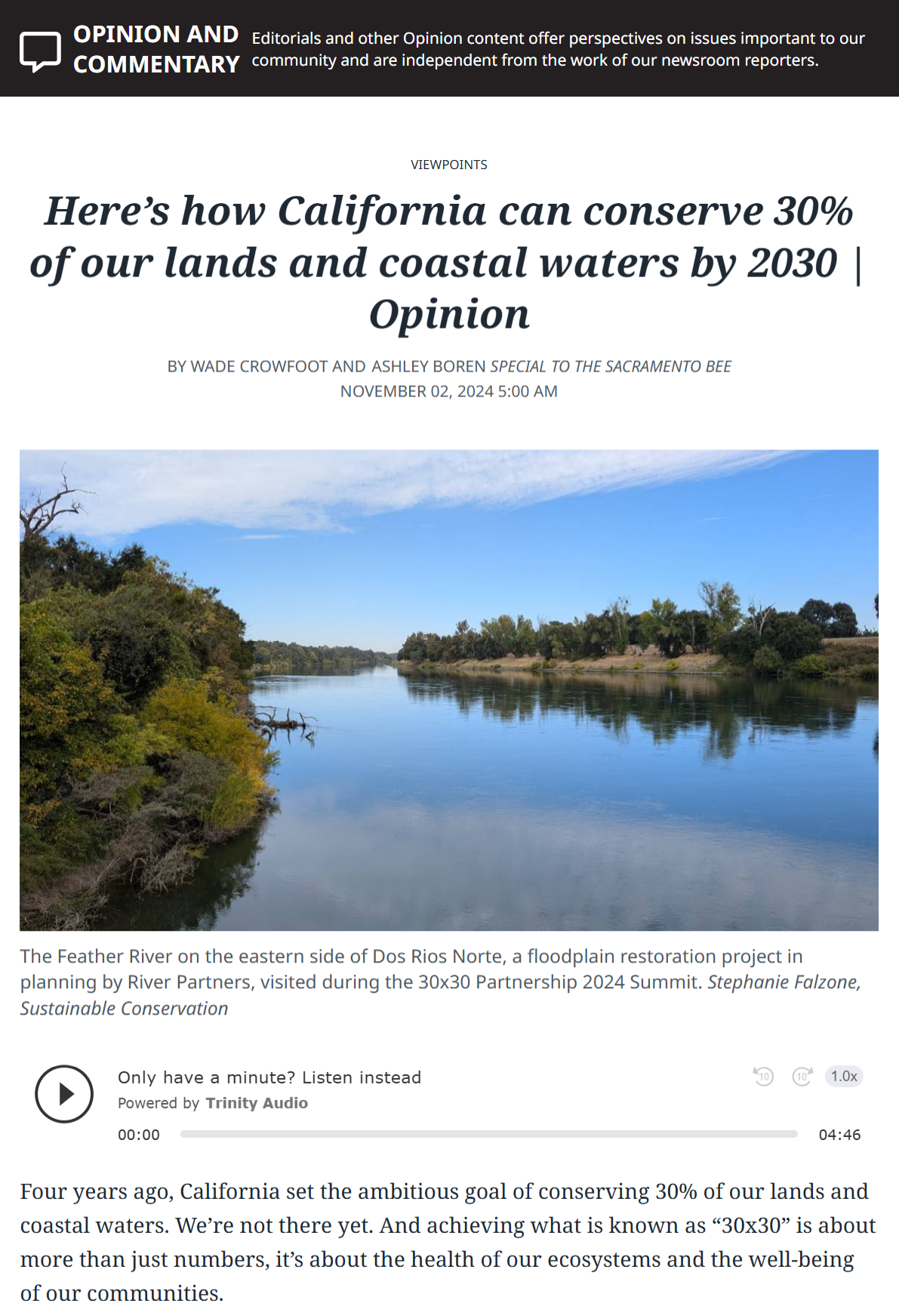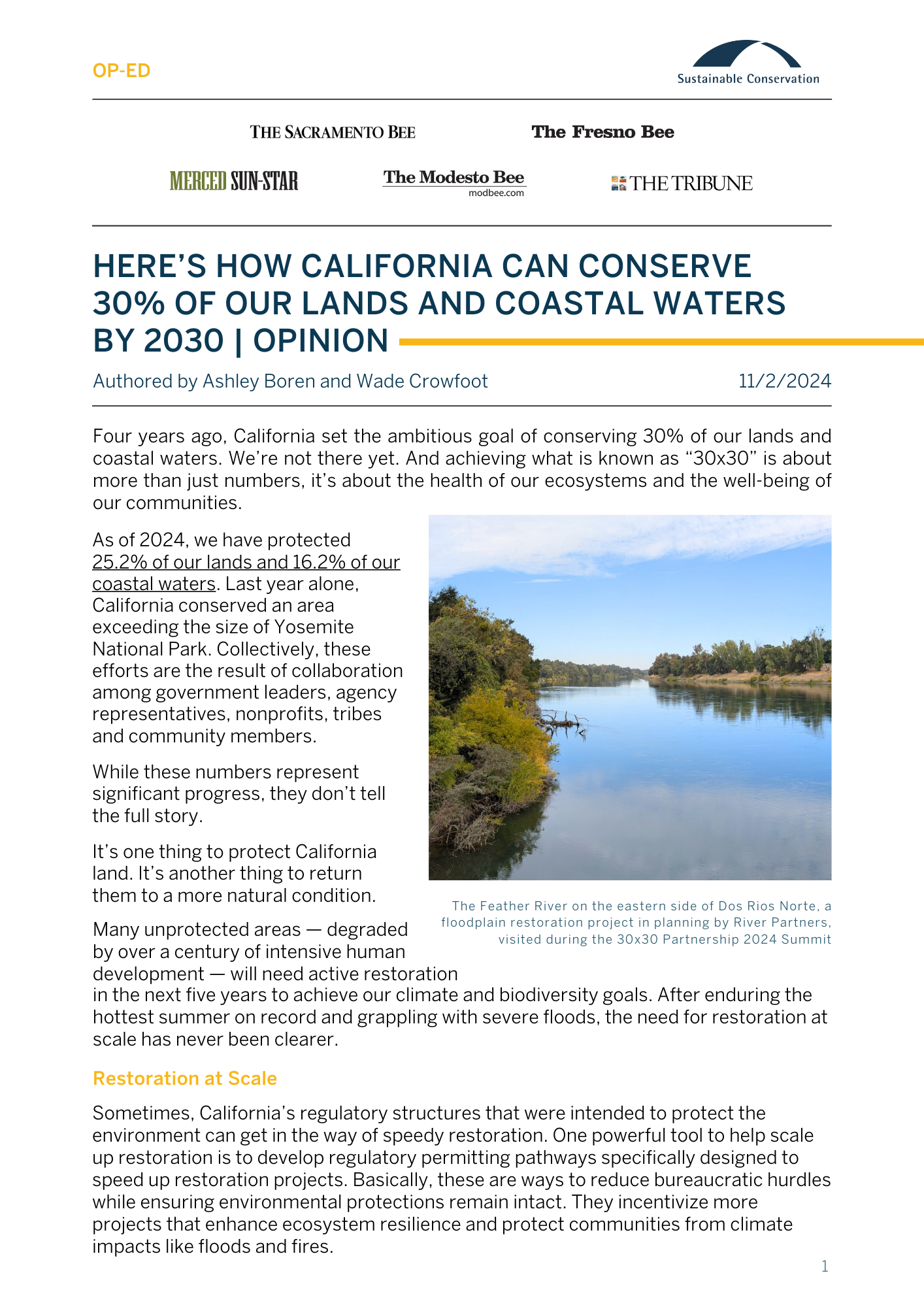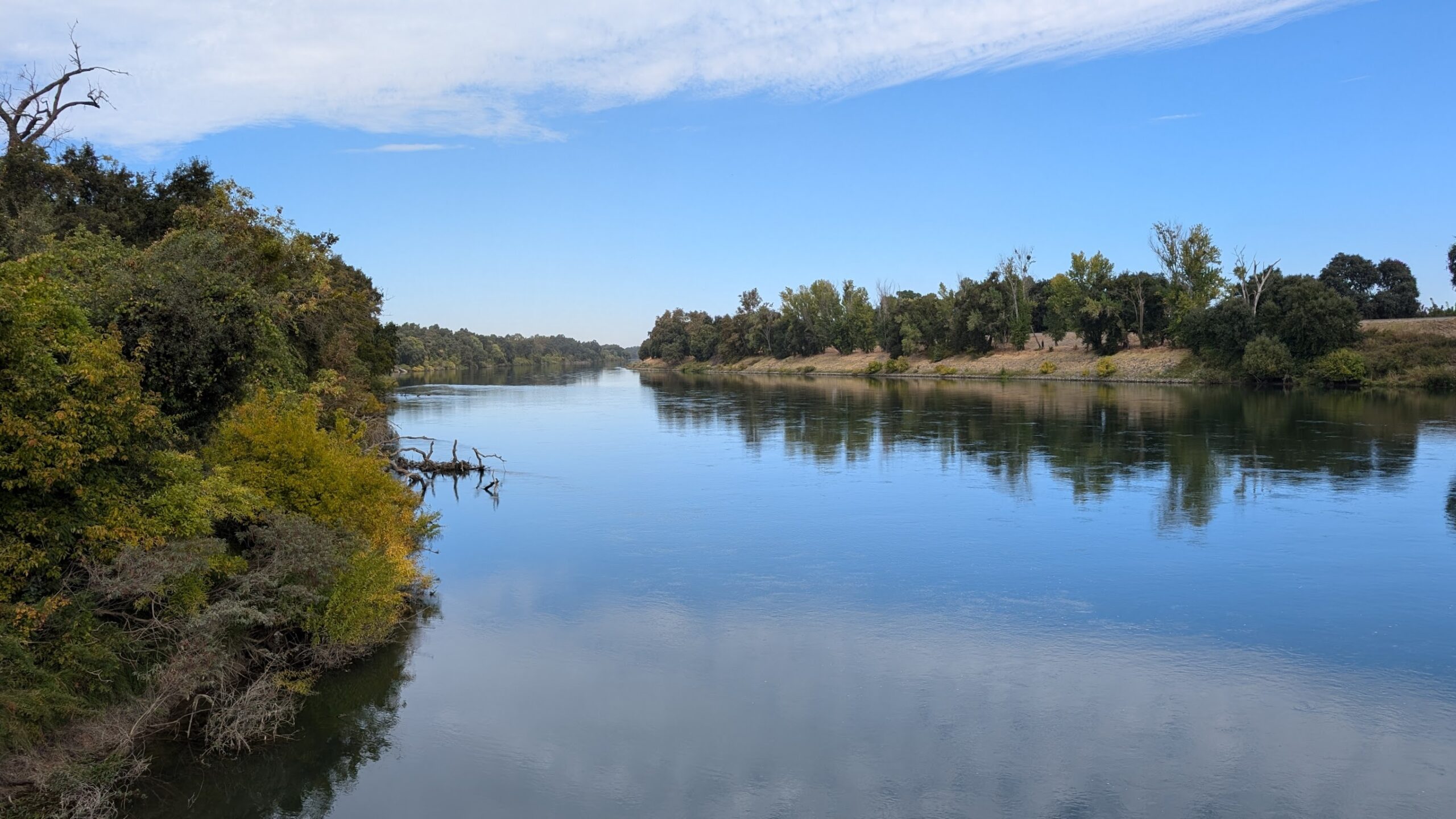
In their recent Sacramento Bee op-ed, Sustainable Conservation CEO Ashley Boren and California Natural Resources Secretary Wade Crowfoot call for California to deepen its commitment to achieving the state’s “30×30” goal of conserving 30% of its lands and coastal waters by 2030. For Boren and Crowfoot, this ambitious target isn’t just a policy objective; it’s a vital pathway to restoring ecosystem health and safeguarding communities in the face of escalating climate impacts. They remind us that 30×30 is about more than simply setting aside land—it’s about investing in the resilience and vitality of California’s natural and human systems.
Boren and Crowfoot advocate for more efficient regulatory pathways to cut red tape, empowering restoration projects to move forward quickly and at scale. By expanding restoration-specific permitting processes without sacrificing environmental protections, California can catalyze the transformative restoration needed to meet its 30×30 goals, enhance ecosystem resilience, and protect communities from climate threats like wildfires and floods.
Here’s how California can conserve 30% of our lands and coastal waters by 2030
November 2nd, 2024
By Ashley Boren and Wade Crowfoot
Four years ago, California set the ambitious goal of conserving 30% of our lands and coastal waters. We’re not there yet. And achieving what is known as “30×30” is about more than just numbers, it’s about the health of our ecosystems and the well-being of our communities.
As of 2024, we have protected 25.2% of our lands and 16.2% of our coastal waters. Last year alone, California conserved an area exceeding the size of Yosemite National Park. Collectively, these efforts are the result of collaboration among government leaders, agency representatives, nonprofits, tribes and community members.
While these numbers represent significant progress, they don’t tell the full story.
It’s one thing to protect California land. It’s another thing to return them to a more natural condition.
Many unprotected areas — degraded by over a century of intensive human development — will need active restoration in the next five years to achieve our climate and biodiversity goals. After enduring the hottest summer on record and grappling with severe floods, the need for restoration at scale has never been clearer.
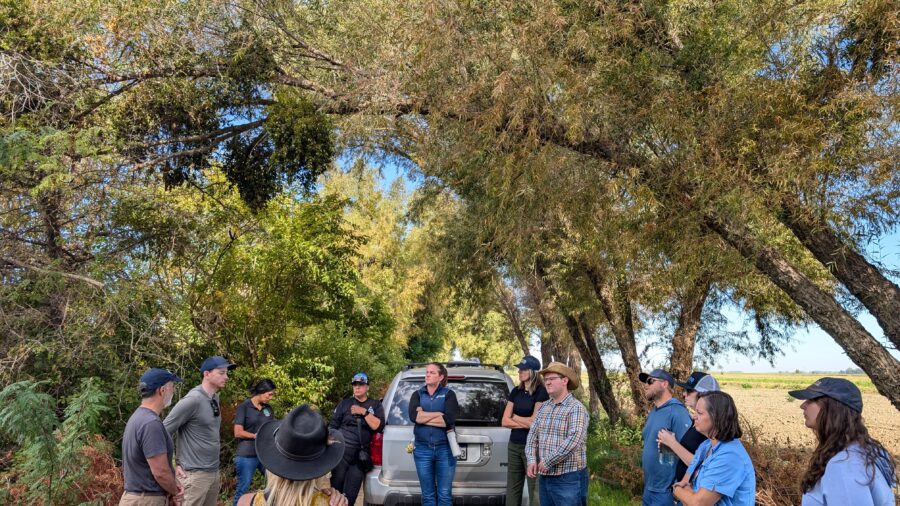
River Partners President Julie Rentner leads tour of Dos Rios Norte for the 30×30 Partnership 2024 Summit Stephanie Falzone, Sustainable Conservation
Restoration at Scale
Sometimes, California’s regulatory structures that were intended to protect the environment can get in the way of speedy restoration. One powerful tool to help scale up restoration is to develop regulatory permitting pathways specifically designed to speed up restoration projects. Basically, these are ways to reduce bureaucratic hurdles while ensuring environmental protections remain intact. They incentivize more projects that enhance ecosystem resilience and protect communities from climate impacts like floods and fires.
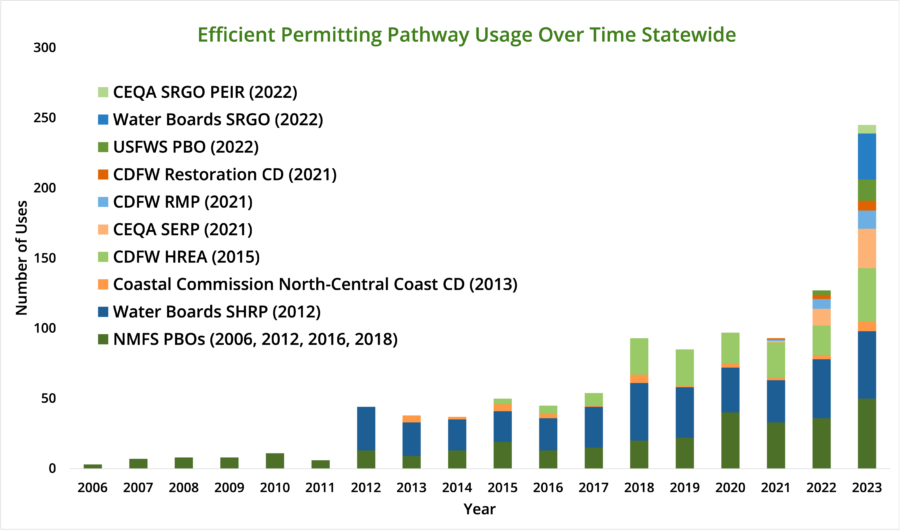
Efficient Restoration Pathway Usage Statewide Over Time. See the detailed version on page 15 of the report “Accelerating Restoration in the Sacramento Valley and Beyond.” Email communications from the NOAA Restoration Center, U.S. Fish and Wildlife Service, State Water Resources Control Board and California Department of Fish and Wildlife (CDFW); Habitat Restoration and Enhancement Act Report, CEQAnet, Statutory Exemption for Restoration Projects concurrences list and California Integrated Water Quality System Project database.
A recent report by Sustainable Conservation, “Accelerating Restoration in the Sacramento Valley and Beyond,” highlights the importance of these pathways. Drawing insights from 39 organizations and more than 80 individuals across environmental, governmental, tribal and private sectors, the report highlights the progress made and steps needed to further accelerate restoration efforts.
In the Sacramento River Basin, one of California’s most active restoration regions, 75% of restoration advocates emphasized that accelerated permitting pathways, especially those coordinated between agencies, are essential for advancing their work. Enhancing and expanding these tools will significantly benefit our ecosystems and the dedicated individuals working to restore them.
For example, programs such as the National Oceanic and Atmospheric Administration Restoration Center and California’s Department of Fish and Wildlife’s Cutting Green Tape teams have proven effective in advancing restoration with shortened timelines and reduced costs. In the past year, Cutting Green Tape saved an estimated $2.5 million and brought average processing times down to 45 days while supporting 217 projects that restored 18,728 acres and 477 stream miles of habitat. Expanding these models across agencies is essential as we race against the clock to achieve our 30×30 goals and navigate an uncertain climate future.
Despite our progress, critical gaps remain: Not all state and federal agencies use efficient permitting processes for environmental restoration projects, and project implementers are sometimes unaware of streamlining opportunities or face inconsistent interpretations of regulatory requirements. To effectively accelerate restoration, we need targeted guidance from leadership, increased agency capacity, enhanced training and the assurance that these tools will be applied consistently across the board.
While the Cutting Green Tape Initiative has made significant progress, it’s critical to empower agencies and restoration practitioners to build on this momentum. Together, we must partner to restore habitats, protect endangered species, and increase our preparedness for future climate challenges.
The Path Forward
The message is clear: Our success depends on using the right tools, focused leadership and leveraging available resources. We must scale up successful initiatives, develop new strategies to fill existing gaps and tackle the persistent challenges that impede progress. An inclusive approach is one where state and federal leaders collaborate with restoration advocates, tribes and communities to increase the pace and scale of the work we need for our environment and our communities.
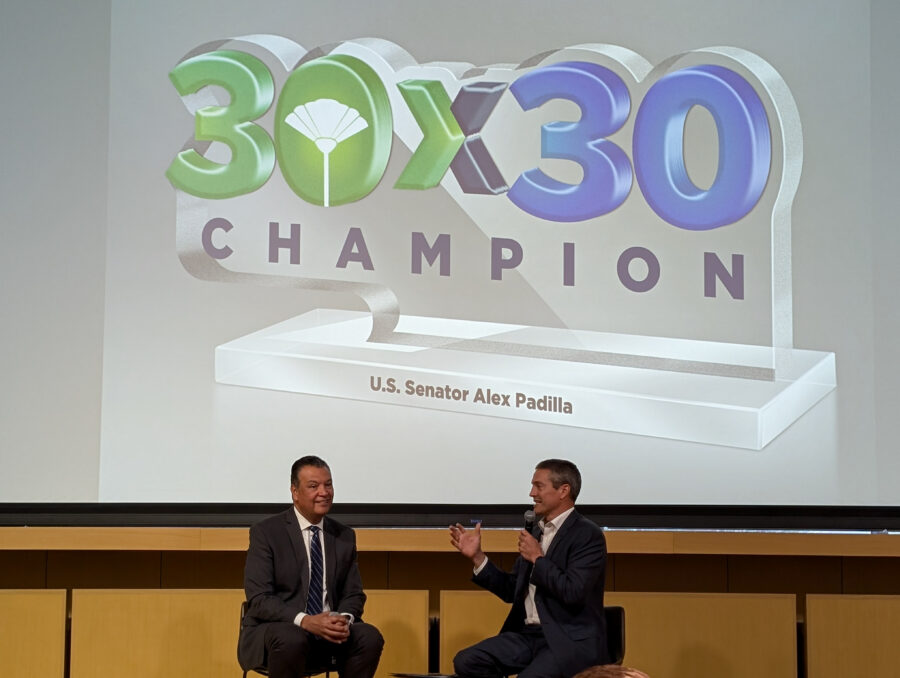
Sen. Alex Padilla and California Natural Resources Secretary Wade Crowfoot in conversation at the 30×30 Partnership 2024 Summit. Stephanie Falzone, Sustainable Conservation
The 30×30 initiative presents an opportunity to reactivate our ecosystems and enhance California’s resilience. We can restore and conserve California’s ecosystems for generations to come.
